"A procession of the damned.
By the damned, I mean the excluded.
We shall have a procession of data that Science has excluded.
Battalions of the accursed, captained by pallid data that I have
exhumed, will march. You'll read them -- or they'll march. Some of them
livid and some of them fiery and some of them rotten..."
- Charles Fort, The Book of the Damned
Yes, and rotten is what Beebe, Arkansas woke up to on the opening day of
2011: A whole lot of rotting red-winged blackbirds. Initial estimates
put the number of dead birds littering the yards and streets of Beebe
at around 5000. Not only this, but about 125 miles west in Ozark,
Arkansas an estimated 100,000 dead drum fish have turned up on the
shores of the Arkansas River.
So what gives?
To coincide with the mass of dead bird and fish from Arkansas, Chile also experienced a mass death
of sooty shearwater birds along the shoreline between Mela and Colmo
Yao counties. This comes on the heels of a magnitude 7.0 earthquake in
the Santiago Del Estero region. Likewise, on the opposite side of South
America, at least one-hundred tons
of dead fish -- mostly sardines, croaker and catfish -- have turned up
on the shores of Paraná, Brazil since last Thursday. These signs do not
bode well for 2011!
Now in a world such as ours, with nearly every square inch of the planet
polluted beyond living tolerance, it would seem that mass animal deaths
should not be so uncommon. After all, in the past several years we've
seen mass die-offs
of honeybees, bats, dolphins, pelicans, frogs and likely other species
that have gone unnoticed. The cause of these mass animal deaths has
often turned out to be specific diseases, pollutants, or some
combination of the two. The odd thing about these dead blackbirds in
Beebe is that they just dropped dead in mid-flight. As Karen Rowe, an
ornithologist for the wildlife commission commented, "it's important to understand that a sick bird can't fly."
So what exactly caused over 5,000 blackbirds to take flight in the
middle of the night then drop out of the sky? These Blackbirds are
normally sleeping at night and they have very poor eyesight in the dark,
according to experts.
But not to worry, apparently the blackbird deaths pose no real
mystery! According to the director of Cornell University's ornithology
lab in Ithaca, New York, the most likely cause of this blackbird carnage
is a "washing machine-type thunderstorm"
which sucked the birds up into the sky and proceeded to soak them.
Being completely soaked, this, in turn, caused them to freeze to death
in the cold December air at which point they fell from the sky.
The good director's sorry attempt to explain away the dead birds would make Charles Fort roll over in his grave for sure!
However, Dr. George Badley, Arkansas's top veterinarian, tells a slightly different tale:
Preliminary autopsies on 17 of the up to 5,000 blackbirds
that fell on this town indicate they died of blunt trauma to their
organs, the state's top veterinarian told NBC News on Monday.
Their stomachs were empty, which rules out poison, Dr. George Badley said, and they died in midair, not on impact with the ground.
That evidence, and the fact that the red-winged blackbirds fly in close flocks, suggests they suffered some massive midair collision, he added. That lends weight to theories that they were startled by something.
The quote above implies that they collided with something, or something
collided with them and that they were "startled". Now, before jumping to
the conclusion that they must have run into a UFO or some super-secret
government beam weapon, let's see if there's an explanation a little
more mundane (despite how unlikely it seems at this point).
Preliminary reports
suggested that the birds could have been killed by fireworks, lightning
or even high-altitude hail from storms. As far as storms go, Beebe did
suffer a spell of bad weather earlier in the day on Friday that
included lightning and thunder. But the storms were far east of the
city by the time the birds were falling out of the sky at around 9-10pm
on New Year's Eve.
Then we have the coinciding drum fish deaths west of Beebe along the
Arkansas River. Surely these underwater fish couldn't have collided
with the same object that struck the birds. Drum fish are known as
bottom feeders and fishermen know them as some of the toughest fish
around. As one fisherman wrote, "[the drum fish] is the most useless and depressing fish in the world. The thing never dies, you can stand there with a club and whack it for a long time, it'll live." In any case, we won't know what actually caused the fish deaths for another month, according a spokesman for the Arkansas Game and Fish Commission.
The two mass deaths of fish and birds in such close proximity to each
other seems too coincidental to be completely unrelated, although the
cause of death would appear to be different in the case of each animal.
It's almost as if whatever killed the birds set off a chain of events
that led to the fish deaths and maybe other phenomena as well. As of
this writing, a similar die-off of blackbirds appears to have taken
place just three days later in Louisiana:
Labarre, Louisiana - Around 500 dead blackbirds and starlings have
been found in Pointe Coupee Parish, according to state wildlife
officials.
This comes after about 5,000 blackbirds and swallows were found dead
around Beebe, Arkansas on New Year's Eve. Dr. Jim LaCour with LDWF said
he's not sure the two incidents are connected.
"It's not common, (but) we do see a few die-offs for various reasons,"
said LaCour. "Yes, we need to look into it, we need to be a little
alarmed, but it's not out of the scope of things to have a die-off."
And now there are even reports of dead blackbird falling out of the sky in places as far away as Kentucky:
It appears that these dead blackbirds first showed up in Kentucky around
"Christmas time", which means that this die-off process might be
something ongoing as opposed to a single collision in an isolated area.
It's possible that these other bird deaths outside of Arkansas were
simply weather or disease related, but it still seems awfully strange.
Could all of these birds die as a result of a collision? And
if so, what sort of 'collision' could span three states and happen in
multiple instances over a week-long period to cause such carnage?
Methane Out-Gassing
The Earth has been known to expel gasses such as C02 and
Methane in large quantities at times -- sometimes to the detriment of
surface dwelling life. This out-gassing usually happens in areas of
high volcanic activity, but the phenomenon is not entirely exclusive to
these regions. Regions that have high natural gas production, such as
the mid-section of Arkansas, may present other areas where out-gassing
could occur. The New Madrid Earthquakes of 1811-1812, which occurred in
the greater Arkansas region, exhibited a number of effects consistent
with the out-gassing of methane, according to the geologist and
astrophysicist Thomas Gold in his paper Terrestrial Sources of Carbon and Earthquake OutGassing.

© Mike Hale
An image from “Gasland,” a documentary on problems attributed to natural-gas drilling, including flaming kitchen taps.
An image from “Gasland,” a documentary on problems attributed to natural-gas drilling, including flaming kitchen taps.
With the recent practice in the oil and gas industry of hydraulic
fracturing, a number of residents living nearby such operations have
reported "flaming water"
from their water wells (the flammable component being methane). As
humans are now opening up the Earth in rather unnatural ways, in
addition to polluting the groundwater and making a lot of their fellow
people sick with the practice of hydraulic fracturing, could hydraulic
fracturing (which is widely practiced in Arkansas for 'enhancing' gas
wells) produce a higher probability of Gaia 'burping' in a given region?
While there is some suspicion that out-gassing could be the mechanism
behind certain mass bird and fish die-offs around the world, this
doesn't appear to be the case with the blackbirds in Beebe. If we
believe the top Arkansas veterinarian, Dr. George Badley, these birds
died as a result of some "collision". The only way that methane could
fit in with the evidence so far is if a bubble of the stuff exploded
somewhere in the atmosphere near the birds. Up to this point, however,
we've seen no other evidence on the ground around Beebe that indicates
out-gassing activity. Tests for poisonous gasses and other diseases
have turned up negative in all the reports given to the media. However,
we can't rule out out-gassing as the cause of fish deaths since those
tests are currently underway at the time of this writing. If we assume
that the fish may have died as a result of methane out-gassing, is there
a common link between this out-gassing and the 'collision' bird deaths?
Overhead Explosions of the Cosmic Sort
One possibility for these bird deaths that I haven't seen mentioned
anywhere yet is that of a shock wave from a overhead meteor or bolide
explosion. Connecting some dots here... In the days preceding the
Blackbird die-off there were several meteor sightings/experiences in the
Eastern US that may be consistent with a stream of cometary debris
entering Earth's atmosphere:
Bright Maryland Meteor Spotted Tuesday Evening
I came back today to two reports of a bright meteor visible from
Maryland Tuesday evening, Dec. 28, 2010. Details are still very sketchy.
But 25-or-so other people from Virginia to New England spotted
something similar at about the same time, according to fireball reports
to the American Meteor Society web site.
US: Meteors Scream Over Maryland for Past Two Nights
For a second night in a row, Maryland residents have reported large fireballs coursing through the night sky...
On Tuesday, the sky over Frederick and Hagerstown lit up like daytime
when what must have been an epic meteor broke through the atmosphere.
The Frederick Post was quickly on the story, gathering the most terrifying quote perhaps ever printed about shooting stars:
"I heard this sizzling behind me. ... I turned and looked: This huge
meteorite came. ... It was throwing off sparks and chunks," Labrush
said. "I'm into meteorites - every time they call for meteor
showers, I'm out. I very seldom get scared - (but) I never want to see
another one like that."
Florida, US: Mysterious 'space ice' baffles Lee County family
An Alva family says a chunk of ice fell from the sky and landed in
their backyard. The homeowner says the skies were clear blue and can't
figure out how it happened.
Cyndi Smith says she is still trying to figure it all out.
"I don't know, a space ice comet! I don't have any ideas where it came from," she said.
According to one article, residents of Beebe experienced explosions just before the birds started falling:
Game and Fish Commission officers said there were reports of loud noises shortly before the birds began to fall from the sky, which may have accounted for why they were flying at such an unusual hour.
Others in the area suspected that it was 'fireworks' that caused the birds to die:
A local resident reported hearing about 20 loud booms Saturday night
- which could have been fireworks or a cannon to get rid of nuisance
birds - and saw a huge flock of frantic birds when he went outside.
The big question is: Were these loud booms the result of fireworks for
New Year's celebrations, or were these explosions something of a cosmic
sort like the Maryland residents witnessed days before? Perhaps one of
the overhead explosions was enough to startle the birds out of the trees
into the sky, and then the shock wave of another struck them
unexpectedly mid-flight as they frantically tried to escape the loud
noises? Birds have much more sensitive internal organs than humans do,
so the shock wave could have affected only the ones in the air closest
to the blast. By the time the shock wave reached the surface, it would
have likely dissipated enough so that any surface dwelling creatures
(including humans) were unaffected and probably only heard it as a loud
'thunder'.
Update (January 5, 2011)
To lend credence to the meteor explosion theory, we noticed this recent article
that referenced a Doppler radar snapshot over Beebe about a half hour
before the reports of blackbirds falling out of the sky poured in. The
commentator at Maryland Weather suspects that this blip on the radar --
which encompasses many square miles -- is actually a huge flock of
blackbirds in mid-flight. Perhaps this is one possibility, but such an
image is also consistent with an overhead meteor explosion.
For those who don't recall, there were several meteor explosions over
the Midwest that occurred on April 14th of 2010. Fireballs lit up the
skies over Madison, Wisconsin and areas along the border of Iowa and
Illinois. Despite the lasting impression this made on nearby residents,
these fireballs also painted a huge blip on Doppler radar as well. But perhaps this was only a huge flock of birds too...© University of Wisconsin-Madison, Department of Atmospheric and Oceanic Sciences
Meteor flash over Madison, Wisconsin on April 14th, 2010.© Unknown
Doppler radar over showing huge blip over Beebe, Arkansas. Is this a flock of birds, a meteor explosion, or something else?
We also have a renegade earthquake in Indiana
that occurred on December 30th in an area that has never experienced an
earthquake in all of recorded geological history. There are no known
faults in the region which leads us to suspect that the earthquake may
have been of cosmic origin too. Just as a comparison, the 1908 Tunguska
explosion in Siberia produced a magnitude 5.0 earthquake at the nearest
seismic station. It should be noted that a bolide explosion in the
upper atmosphere may not necessarily be visible to people on the ground.
But could this hypothetical blast (or series of blasts) be so lucky as
to hit birds in all three states, and if so, why is it only blackbirds?
Why don't we see large masses of other migratory birds among the
fallen dead?
If an overhead bolide explosion is enough to send a shock wave into the
earth, killing birds mid-flight or causing earthquake-like effects,
surely such a shock wave could liberate pockets of gas within the Earth
as well. This could push poisonous gasses to the surface or diffuse
them into bodies of waters. Perhaps this chain of events, starting with
an overhead bolide blast and proceeding to an out-gassing of methane
into the Arkansas River is what killed all those drum fish? But if that
was the case, why only drum fish? Whatever killed these birds and fish
seems strangely selective, although this could be due to a flock or a
school being in the wrong place at the wrong time. Still, red-winged
blackbirds and drum fish seem to be the primary victims at this point.
Meteor Impacts and Genetic Changes
Given the seemingly genetic selectivity of these bird and fish
deaths, one wonders if there isn't some mechanism going on here that we
haven't considered - something hitherto unknown by mainstream science.
Considering the meteor explosion hypothesis, there is an interesting study
that was conducted on the flora and fauna (including humans)
surrounding the 1908 Tunguska blast area by the Budker Institute of
Nuclear Physics in Novosibirsk, Russia. What they discovered was rather
surprising. Various species of flora had certain genetic differences
from similar species in the surrounding forest. These weren't any sort
of sci-fi mutations, but they were nonetheless sufficiently quantifiable
to be measured.
Another interesting observation they discovered was that the genetic
changes didn't necessarily occur to the flora and fauna closest to the
blast site, but rather to those specimens closest to the meteor's travel
path. It was almost as if the light or sound given off by the meteor
prior to the explosion had the ability to alter species' DNA in some
mysterious way. The authors of the study speculate that electromagnetic
waves in the VLF range were given off during the meteor's approach.
These VLF waves then affected "heat shock proteins" in the nearby plants
and animals, causing lasting genetic modifications.
VLF waves have also been observed preceding major earthquake events too. Some even believe these waves can predict major earthquakes. There have also been many cases in modern literature and folklore
of animals acting crazy or trying to escape just before major
earthquakes. If VLF waves preceding earthquakes are what drive animals
to such odd behavior, perhaps it's not such a stretch to consider VLF
waves from meteors or fireballs as producing mutation or death in a
given species? Maybe meteor or comet impacts are the real evolutionary
origin of this biological flight program found in some animals?
One has to admit this is highly speculative, however. There could
possibly be other more plausible explanations for the selectivity of
these mass animal deaths once more data becomes available. As mentioned
above, it could just be a case of being in the wrong place at the wrong
time.
Perhaps it is best to leave this one "open" for now and see where this Procession of the Damned ends up...
Comment: For more information on Earth's hidden
history of interaction with Comets and Asteroids, we encourage readers
to check out Laura Knight-Jadczyk's Comets & Catastrophe series listed on the left column of SOTT.net
To see the staggering number of 'die-offs' around the world depicted on the world map (with links to the news stories) click here
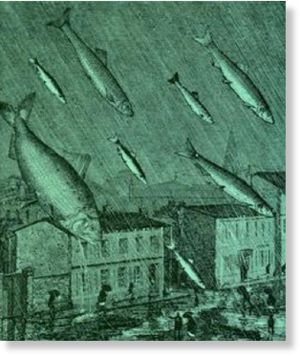
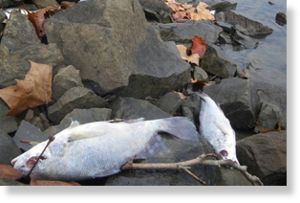

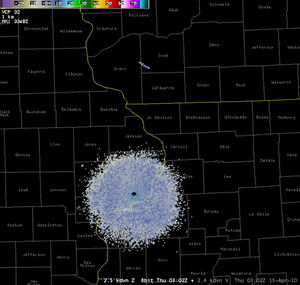
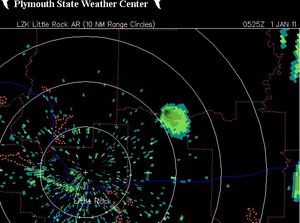

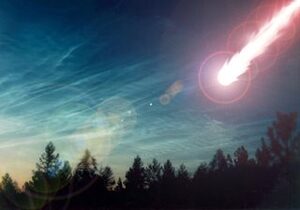
No comments:
Post a Comment